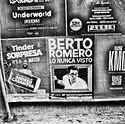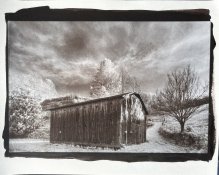Rolleiflexible
Member
FWIW, Melanie's eyes work their wonders in every example you have posted!
I hope that both of you are well.
Matt, thanks for the good wishes and the compliment. Although the bleached version is not at all what I was trying to achieve, it is still interesting for the way it isolates her eyes in the print.
I'm going to start printing some of the landscapes in larger formats now. Wish me luck.









